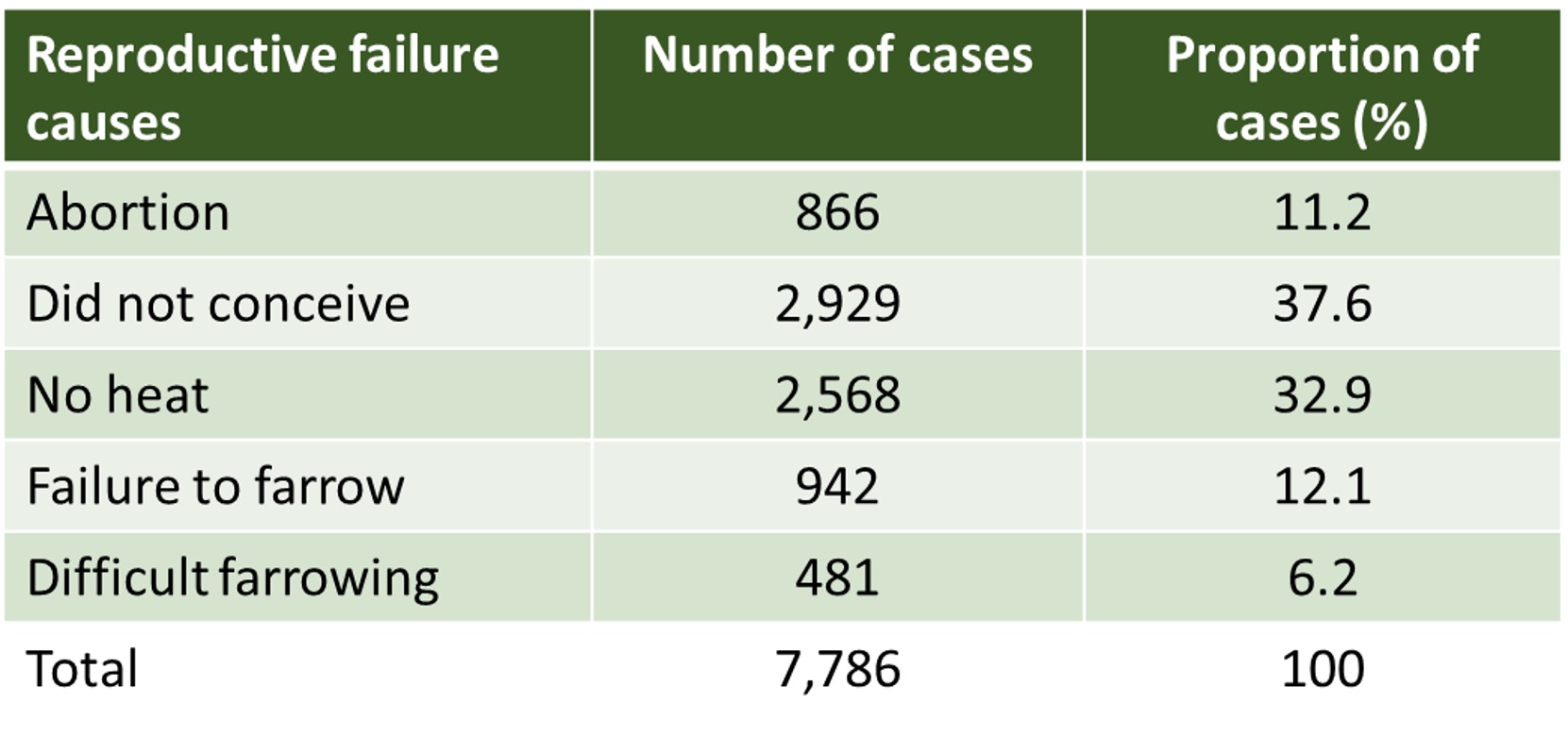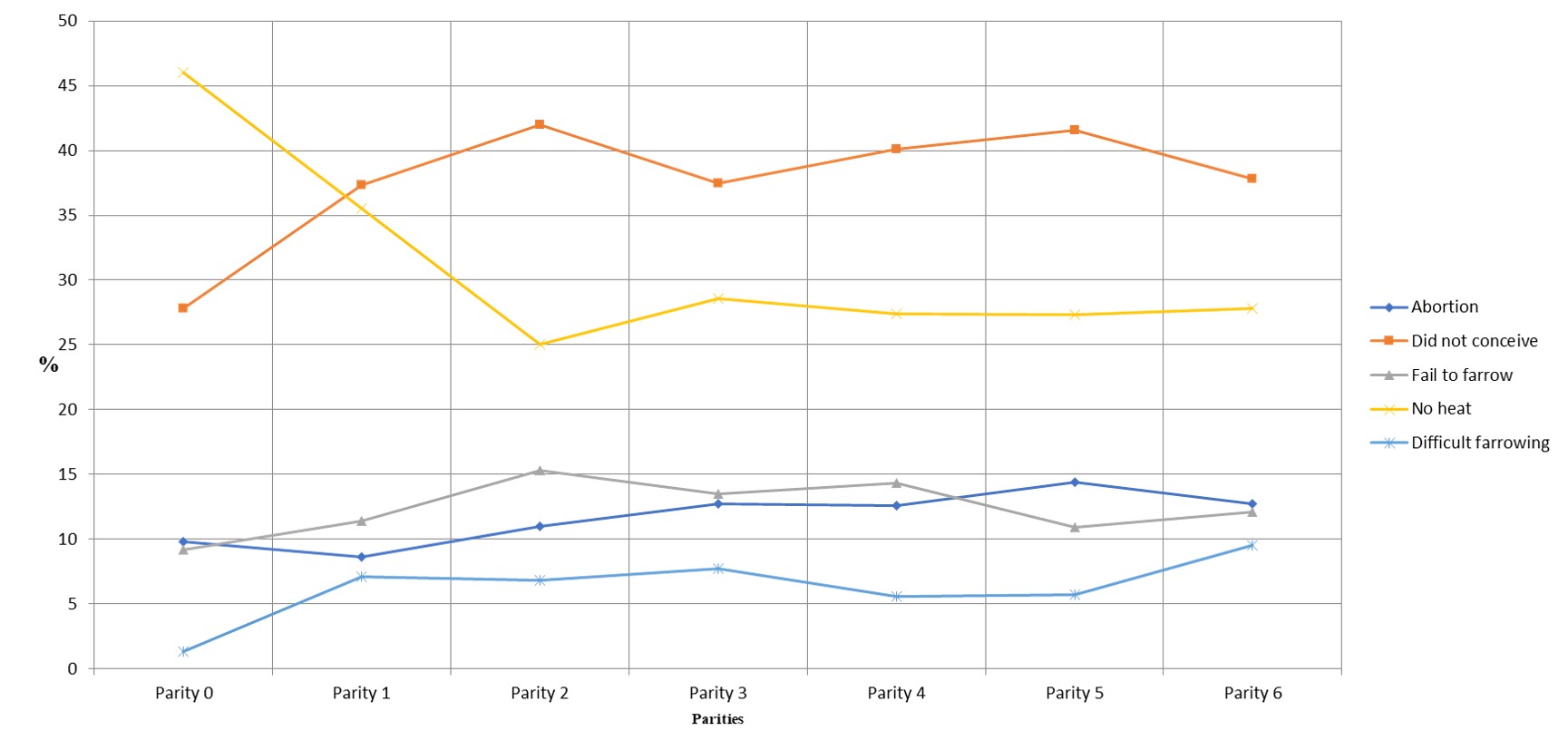



Linking reproductive failure to parity trends in the sow herd
Results from a new study demonstrate that the parity of a sow can greatly increase the incidence of reproductive failure and subsequent removal of the sow from the herd.Reproductive failure (RF) as the primary cause for unplanned sow removal commonly accounts for >30 percent of overall sows culled in commercial herds (Boyle et al., 1998) and (Balogh et al., 2015). RF occurs in all swine breeding operations but is regarded as significant only when production levels fall below expected productivity margins: percentage of animals cycling, conception and farrowing rates. RF interferes with the consistent production of pigs which ultimately results in sub-optimal number of pigs for market.
Joab Malanda, University of Debrecen Msc Animal Husbandry student, highlights some of the major causes of RF in the sow herd and how patterns in the prevalence of those causative factors are distributed from Parity 0 to Parity 6. Most reproductive problems have causes involving management practices, environmental effects, genetics and disease conditions. A retrospective analysis of RF removal causes provides solutions to underlying facts about RF which couldn’t be achieved through controlled experiments.
The study
A total of 7,786 sows removed due to RF in a commercial sow herd in Minnesota US over a period of four years (2015-2018) was analysed to characterise their removal patterns. Characterisation and quantification of sow removals by RF has provided a revelation on the deeper trends regarding the vulnerability of the various parity in respect to common causes of RF. It was important to categorise RF into its causes so that a more precise investigation could occur. Table 1 shows the more common RF causes that were determined during the study.

© Joab Malanda

© Joab Malanda
Information regarding sow removal is important in swine operations since it’s linked to a better understanding of underlying issues such as disease and management problems. Figure 1 shows that gilts (P0) are highly vulnerable to experiencing “no heat” as a major indicator of their RF removal. This could be attributed to various management practices such as limited boar exposure of pre-pubertal gilts in the Gilt Development Units (GDU) or silent heat gilts could go unnoticed during heat checking.
The trend of “no heat “slows down and stabilises as parity increases, attributed to the fact that many gilts that survive the removal by “no heat” end up gaining synchrony with the association of the higher parities in the herds as their risk of removal is higher in the GDU. On the contrary P0 experience a lesser risk of removal due to “did not conceive” which could be associated with their newness in reproductive life and being viewed as “fresh” animals. The risk of removal by not conceiving gains an upward trend as age increases attributed to the fact that as the sow grows older the vitality and strength of the reproductive tract is mitigated by past pregnancies.
Conclusions
Modern swine production is highly focused on efficiency and cost of production. Gilts/sows that fail to come in heat/conceive are viewed as uneconomical to be sustained in the herds and due to this strictness aimed at avoiding buildup of nonproductive days most gilts/sows rarely get a second chance. Principally this could explain why there is a high number of removals by “did not conceive” and “no heat” being experienced in younger parities. The high number of removals in young parities affects their overall herd performance as reported by Dijkhuizen et al. (1989) and Niemi et al. (2017).
Unplanned sow removal for RF is inevitable. the result of the study indicate that both of the most prevalent causes of RF, “did not conceive” and “no heat”, both involve management practices. Management of RF can only be satisfactory if swine producers investigate the individual animal and consider cause and parity - unlike a whole-herd approach. Since RF removals are highest in gilts (P0), measures should be taken for appropriate gilt selection and initiation in the breeding herd. There is need for adequate and timely boar exposure to prepubertal gilts as a way of stimulating them to come into first heat but also multiparous sows after weaning to stimulate them back to cycle. Efficient and steady heat checks should be enhanced to spot gilts/ sows that could be experiencing silent heats.
A combined success of good quality semen, physical and physiological receptive gilt/sow at insemination and the keenness of the inseminator results in positive conception. Essentially, timely insemination of gilts/weaned sows that proved sufficient “lock-up” /standing heat at the time of heat check should be emphasised to reduce the incidences of conception failure. Overall sound management planning and execution of informed decision should be adhered to avoid unnecessary sow removals that are becoming very economical. This will therefore contribute to cumulative objective of improved swine productivity and efficiency.








